#south slavic languages
Text
When a language wants to be as unique and authentic as possible and tries to replace all the international words with their own stuff - I can definitely understand that.
But what have Vienna? has ever done to you?? dear Slovenia??? so you don't even acknowledge it's existence???? And simply refer to the river Dunaj instead?????
(also in several other south Slavic languages, like Serbian or Bosnian, Vienna is called Beč, where č makes the "ch" sound and the whole word sounds kinda like "bench" without "n" in it)
10 notes
·
View notes
Text
Mila and Tain won't stop flirting outrageously and ostentatiously in public at a big Space Soviet People's Festival and Tolan is like "for fuck's sake I cannot take you two ANYWHERE" lmfao
#I love Rome-China Cardassian People's Republic#fanfiction is good actually#baby garak is autistic in this AU and the Kardasi conlang borrows features from Inuit + South Slavic languages + also the#Kryptonian conlang which is insane#Other elements too I'm not picking up
12 notes
·
View notes
Text
Sorry i was sold on the fact that there's a world (?) named Belobog and Jarilo with a character who has a -ski last name and another that's named Luka etc etc.
#i think i once said that my fave way to avoid people recommending me american shows#is by parrying the ''it's gay'' with ''but does it have (good) slavic rep?'' and you know what?#sounds to me like even if it's not canonically slavic. it's giving me more than enough wiggle room to MAKE it slavic#not to mention Jarilo sounds like it's spelled the way we spell it in most south slavic countries#like i know Polish spells it as Jaryło and if you'd transliterate it from eastern slavic languages it'd be Yarilo#so i can even claim them as Naši#omg there's also a chara last named Sergeyevna??? YOU GUYS WERE HIDING THIS FROM ME#THEY ACTUALLY GAVE HER A LAST NAME THAT FITS HER GENDER
8 notes
·
View notes
Text
sometimes i remember that there are several suli phrases straight up ripped from the bosnian/croatian/serbian language just. There in the books
#me turning a page and suddenly seeing the language of my family: oop#even though the suli are predominantly based on the romani + south asian cultures... why bcs#why bcs !!!!!!!!#the concept of slavic culture is such a . wild thing in the books bc woo boy are there some CHOICES
4 notes
·
View notes
Text
I want to find an actual resource to learn polish. Duolingo didn't really work well for me & neither did Rosetta Stone... the most progress I ever made was when I took an actual class in university
#petchyposting#langblr#also fun thing my friend (who is south asian) was talking language and grammar with me and apparently Slavic and prakritic languages have#similar grammar which is pretty neat
3 notes
·
View notes
Photo

The triple division of the Slavic languages
by anthro.atlas
The Slavic languages, one of the major subfamilies of the Indo-European languages, are usually divided into three branches: East (e.g., Russian and Belarussian), South (e.g., Serbo-Croatian and Bulgarian), and West (e.g., Polish and Slovak). Some scholars contend, however, that this division is mostly based on extralinguistic factors, such as the speakers’ divergent ideological and religious views. For instance, some argue that some languages and dialects are misclassified due to political factors (e.g., Rusyn and Silesian) and that there are only two main branches, the South and the North (which includes the East and West Slavic languages). Sources: Ethnologue (2023) & Tomasz Kamusella’s paper, “The Triple Division of the Slavic Languages” (2005)
204 notes
·
View notes
Text
Different orthography among Slavic languages
English: I’m not laughing
Ukrainian: не сміюся (ne smijusja)
Slovak: nesmejem sa
Croatian: ne smijem se
East Slavic languages write the reflexive as a suffix.
Czech and Slovak write the negative as a prefix.
Polish and the South Slavic languages write both the negative and the reflexive as particles separate from the verb.
207 notes
·
View notes
Text

Vampir is a Serbian word (one of the South Slavic languages) that entered most world languages after 1725 and Austrian and later German newspaper articles on vampirism that befell a Serbian village, the strange deaths of nine people in a short time, and the unearthing of the first vampire from his unsteady grave.
Stay tuned for more insightful bits of Slavic mythology in English (and many other languages soon on our website). 🔥
#slavic mythology#mythology#classical mythology#folklore#slavic folklore#mythology and folklore#folk traditions#slavic culture#ancient wisdom#slavic mythology net#SlavicMythologyNet#mythical creatures#mythological creatures#mythical beings#mythological creature#fantasy creature#slavic tradition#slavic myths#myths and legends#slavic fantasy#legendary creature
71 notes
·
View notes
Text
Difference between "Romani"/"Roma" and "Romanian"
I decided to make this post because a lot of people get Romanians and Roma mixed up. It's something that's pretty common, even among Europeans who are more familiar with Roma than Americans are.
"Romanian" comes from latin "romanus", meaning "Roman", inhabitant of the city of Rome (Italy). Romanians are a white people indigenous to (Eastern) Europe living in Romania.
"Roma" (noun) and "Romani" (adjective) mean "people" in Romani language. It probably comes from Sanskrit "ḍoma", which refers to a traveling caste of musicians. Roma are a South Asian diaspora that traveled through the MENA region for about two centuries before arriving in Europe in the Middle Ages.
Many people get Romanian and Romani confused because of the following reasons:
the names are similar: this is true but coincidental, as "Romanian" comes from Latin and "Romani" comes from Sanskrit, and both words have very different meanings
Romania has the largest Romani community in Europe: this is true. The reason is that, upon entering Europe in the Middle Ages, the Roma that arrived in Romania were enslaved and couldn't move out of the country. The slavery of Roma in Romania lasted 500 years. After it ended, in the mid. 19th century, the majority of those Roma remained in Romania, though a few of them migrated to America and to Western Europe.
TL;DR
The Romanians are indigenous to Europe. The Roma are indigenous to India.
Romanians are usually Orthodox Christians. Roma can be of any religion, typically converting to the dominant religion of the region we settled in.
Romanian culture (singular) is a unique culture that was influenced by its proximity to Slavic, Greek, Hungarian, German cultures. Romani cultures (plural) are of South Asian origin and were shaped over the centuries by our travelling through the Middle East and Europe.
Romanians live in Romania. Roma don't have a particular country.
The reason many Roma live in Romania is because Romania has a long history of anti-Romani racism and slavery.
Romanians often suffer from xenophobia when living abroad because they are (white) Eastern Europeans. Roma suffer from racism and xenophobia: we are a brown people whose cultures are very identifiable as non-European. As such, we have suffered and still suffer segregation, police brutality, ghettoization, slavery, pogroms, slaughters, discrimination in the workplace and in education. Anti-Romani racism is still the most widespread form of racism in all European countries to this day.
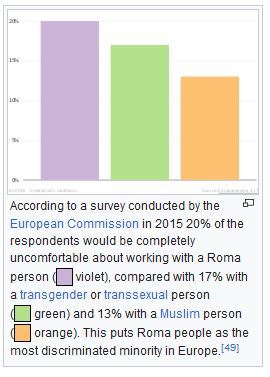
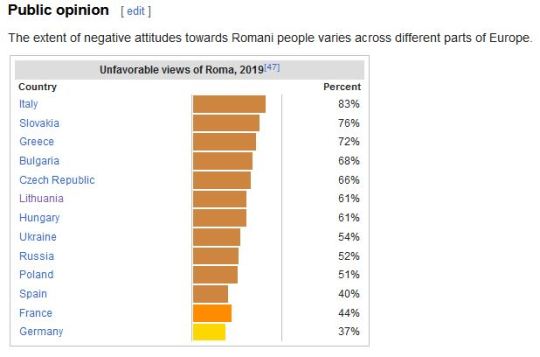
The majority of Roma, especially those living in Eastern Europe, ie around 2/3rds of Roma, are visibly brown, because of our mixed ancestry (South Asian + MENA), though some groups can be lighter due to interracial marriages with white people. It's the case of the British Roma, in particular.
Our traditions, culture and belief system evolved with us from India through the Middle East to Europe. It is thus pretty recognizable as "non-European" and has been used to identify us as "others/foreigners" over the centuries. FYI, there is not one single and unique Romani culture, because cultural beliefs and practices, as well as religion and Romani language dialect can vary a lot between each Romani group. To make it more intelligible, I invite you to think of the larger Romani diaspora as one race that is composed of a manifold of Romani ethnic groups.
Romanian

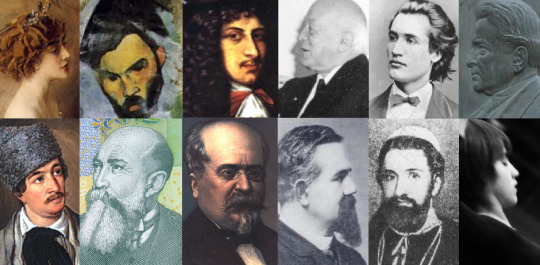

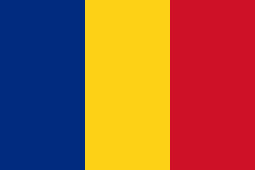



Romani (adjective) / Roma (noun)
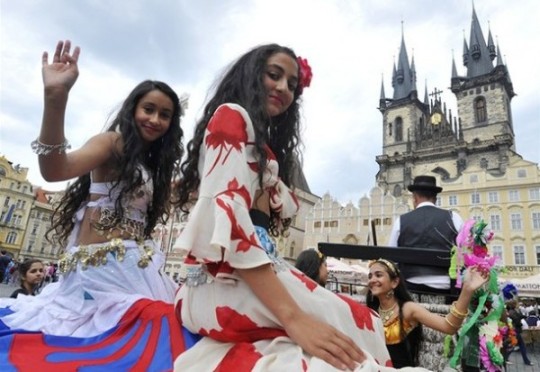


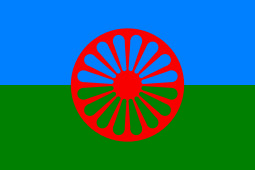



(I have more of these in my "Roma" tag)
Roma =/= Romanian. Romanians are European while Roma are a South Asian diaspora. While Romanians do suffer xenophobia when living in Western Europe and America, anti-Romani sentiment is a type of racism widespread in all of Europe and America. It's particularly important to know the difference between Roma and Romanian, as Romania has a very long history of racism against Roma: slavery, segregation, ghettos, genocide.
#roma#don't hesitate to ask questions if something isn't clear or if you wanna know anything in particular!!
194 notes
·
View notes
Text
◞ ♡ what’s in a name? : death.
below the cut are 32 names that relate to death in their native languages. feel free to use these names as you’d like. this is part three of my what’s in a name series. if you found this helpful, please like and/or reblog!
pt. I - beauty.
pt. II - strength
aeron (celtic)
aita / eita (etruscan)
ajal (arabic)
anubis (egyptian)
asaka (japanese)
azrail / azrael (hebrew)
bacia (ugandan)
balor (irish)
dabria (english)
dáinn (norse)
freyja (norse)
hela (norse)
kaliya (indian)
keres (greek)
lefu (south african sotho tribe)
loralie / lorelai / loreley (german)
mara (sanskrit)
maveth (hebrew)
morana (slavic)
morrigan (irish)
mort (french)
morticia (latin)
mortis (latin)
nekros (greek)
omisha (hindi)
osiris (egyptian)
persefoni / persephone (greek)
pluto (roman)
tanda (native american, no specific tribe found)
thana (arabic)
valdis (old norse)
yomi (japanese)
67 notes
·
View notes
Note
my slavic historical linguistics course taught me that basically all original past tenses from proto-slavic (aorist, perfect, pluperfect, etc, aspect expressed with conjugation) died out in modern russian aside from an "L-participle" (i.e. я шёЛ with an L) which was originally used in combination with an auxiliary verb similar to быть/есть, but south slavic languages like serbian technically still use (albeit less common) most of the original past tenses
I actually learnt about it quite recently, that there used to be a bunch of past tenses in Russian. They left artifacts such as Я было пошёл, да вернулся. Fascinating!
82 notes
·
View notes
Text
Hey, non-slavic people wanting to write about characters with traditional to oldtimey first names.
Forget every baby name page you've heard of and go to this wikipedia page. It's very comprehensive, correct as far as I can tell (I'm czech but i don't have any language education) and it's really cool to have all the names sorted into groups like this, it makes it easier to understand how people making there names were thinking.
Just please, if you're using more than one name, make sure to stick with one country, or at least the east/south/west group, because while some names are used more widely, when you put names like Svyatopolk, Dragiša, Wojciech, Václav and Ľubomír together it feels likely they all are from different places.
(To figure out how the example names look in different slavic languages and which forms of them should be used together is left as an exercise left to the interested - or bored - reader.)
17 notes
·
View notes
Text
“…Impressed by the power of Charlemagne (died 814), Slavic people took his name Karl as the common name for ‘the monarch, sovereign.’ However, according to the rules of late Proto-Slavic phonology, the consonant cluster [rl] could not hold. The pressure to dispose of it was common to all speakers of Slavic dialects, yet the way the problem was resolved turned out to be different in the South, North-East, and North-West. The Southern Slavs employed a simple metathesis ar > ra: Serbian кра̑љ, Bulgarian крал (also Czech král); in Polish, the metathesis was accompanied by a shortening and eventual change of the vowel: król; in East Slavic languages, the problem was resolved by adding another vowel between the consonants (the so-called pleophony): Russian король. The meaning remained the same everywhere: ‘king.’”
[from the introduction of Boris Gasparov’s Old Church Slavonic]
161 notes
·
View notes
Text
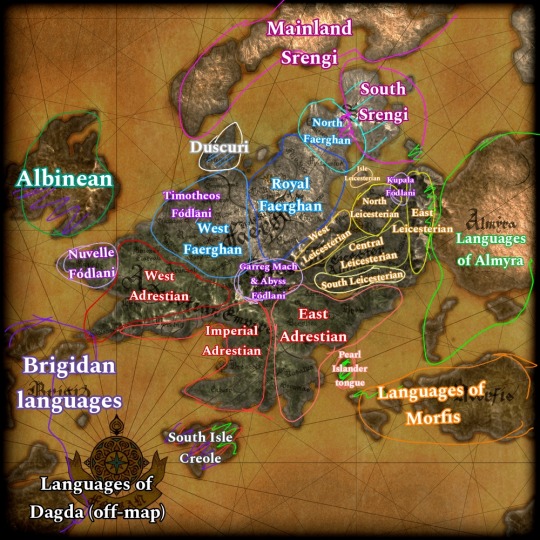
Dialect/language map headcanon for Fódlan and surrounding lands
My headcanon is that Adrestian is approximately a Romance language spoken with a Germanic accent, Faerghan is approximately a Celtic language spoken with a Slavic accent, and Leicesterian is Slavic language(s) spoken with a whole bunch of different accents depending on the dialect, as they're much less centralized compared to the other two nations.
Specifically my ideas for what each Leicester dialect speaker's accents would be like if they spoke modern day English is:
North Leicesterian = North Italian accent
East Leicesterian = Serbian/Bosnian/Croatian accent
Central Leicesterian = Romanian
South Leicesterian = Greek
West Leicesterian = some mix of Celtic and Germanic
Isle Leicesterian = Albanian
You can read the full details of the brainrot here
16 notes
·
View notes
Text
Crossposting from Twxttxr: some interesting news about ongoing research by colleagues, from a workshop "Diversification of Uralic" just this Thursday and Friday
Do the Permic languages have loanwords from Old Norse? e.g. ONo. ár ~ Komi & Udmurt ar 'year'. This would've been sensible during the brief time when Norsemen originally from Sweden were in charge of trade along the Volga and settling in inner Russia, forming the Rus' (later Slavicized, but as we know from Byzantine sources they remained Norse for centuries) — and also the Norwegians too were known to conduct exploration + trade along the Barents Sea at the time, our oldest written reports of "Bjarmia" come from them after all.
Do the Finnic languages have loanwords already from Pre-Proto-Germanic into Pre-Proto-Finnic? My first reply would've been "yes surely", this has been discussed for half a century and there's dozens of etymologies out by now. Turns out though that there's still a lot of room for skepticism if we try to assemble a big picture. Most of these could be (and have been proposed by other analyses) to be proper Germanic after all, or from some non-Germanic kind of Indo-European, or even incorrect. There is unambiguous evidence I think at least of loans lacking *ā > *ō, but that's already though to be one of the latest common Germanic innovations, perhaps barely post-PG.
[Follow-up question: do we even know where Pre-Proto-Germanic was spoken? might not have been anywhere convenient for contacts with Pre-Proto-Finnic.]
— A few similar problems also in the less discussed supposed layer of Proto-Balto-Slavic or pre-BSl. loans, but by areal considerations it seems obvious to me there must've been Uralic/IE contact somewhere in the Russian forest belt for ages already, even if it might not have left enough evidence to clearly distinguish from things like pre-Indo-Iranian loans.
Do the Samic languages have loanwords that are not from any historically attested branch of Scandinavian, but some sort of a lost variety entirely? This could be an explanation for an unexpected sound correspondence *j → *ć in many loans; it might also explain some loans that look surprizingly archaic, e.g. lacking any reflection of Siever's Law. One example showing both is indeed *Tāńćə 'Norse', from some sort of a *Danji- variant of Proto-Germanic *Daniz.
Several new hypotheses on the history of of sibilants in Ugric, adding to the growing tally of evidence that traditionally reconstructed *s > *θ and *ś > *s "in Proto-Ugric" are actually later developments. A paper supposed to be coming out soon!
No linguistic evidence so far, but a 1670 travelogue by de La Martinière appears to still report seemingly pre-Uralic populations along the Barents Sea coast — and even on Novaya Zemlya, traditionally thought to have been uninhabited (as reported by other early modern explorers) before some Tundra Nenets briefly settled there in mid 19th century. Apparently there's been no real archeological investigation, but also at least two stone labyrinths are known as signs that humans still must've at least visited there sometime in the past.
[By current knowledge, labyrinths from Sweden and Finland have mostly been built in late medieval and early modern times though, so they don't suggest especial antiquity either. Could the ones on NZ in fact have been left behind by some of these historical Northwest European expeditions?]
Various discussion also on the development of Samoyedic. Nothing particularly all-new (maybe on Nganasan, more on that in a PhD thesis to appear later this year though), but a few main results include 1. clear recognition that there is no "North Samoyedic" group (as has been suspected for several years now), 2. confirmation that there is regardless a narrower Nenets–Enets group, and 3. some development of a model where all three of Nenets, Enets and Nganasan may have moved to the tundra zone independently from further down south (as is certainly the case for Northern Selkup, the most recent northern expansion of Samoyedic speakers).
#historical linguistics#loanwords#language contact#archeology#ethnohistory#uralic#finnic#samic#permic#samoyedic#germanic
28 notes
·
View notes
Photo

Language families of Austria-Hungary in 1910.
by hunmapper
Multinational Empire: Austria-Hungary was characterized by its diverse ethnic composition, encompassing a wide array of ethnic groups and languages. The empire included Germans, Hungarians, Czechs, Slovaks, Poles, Ruthenians, Romanians, Croats, Serbs, Slovenes, Italians, and others. Dual Monarchy: The Austro-Hungarian Empire was officially known as the Dual Monarchy because it consisted of two separate entities, the Austrian Empire and the Kingdom of Hungary, each with its own government and institutions. The two entities shared a monarch (Emperor Franz Joseph I from 1867 to 1916), who ruled both parts of the empire. Germans and Hungarians: The Germans and Hungarians were the two largest ethnic groups in Austria-Hungary. The Germans were predominant in the Austrian part of the empire, while the Hungarians were the majority in the Kingdom of Hungary. The dual structure reflected the compromise reached in 1867 to balance the power between these two major groups. Slavic Diversity: The Slavic population was significant and diverse within Austria-Hungary. This group included Czechs, Slovaks, Poles, Ruthenians (Ukrainians), Serbs, Croats, and Slovenes. The empire struggled to manage the national aspirations and demands for autonomy from these various Slavic groups. Nationalism Challenges: Nationalism was a major challenge for Austria-Hungary, as various ethnic groups sought greater autonomy and independence. The rise of nationalism contributed to tensions and conflicts within the empire, ultimately playing a role in its dissolution after World War I. Balkan Component: The empire extended into the Balkan region, incorporating territories with a mix of South Slavic, Romanian, and other ethnic groups. The Balkan component added another layer of complexity to the ethnic mosaic and contributed to the geopolitical challenges faced by the empire.
115 notes
·
View notes